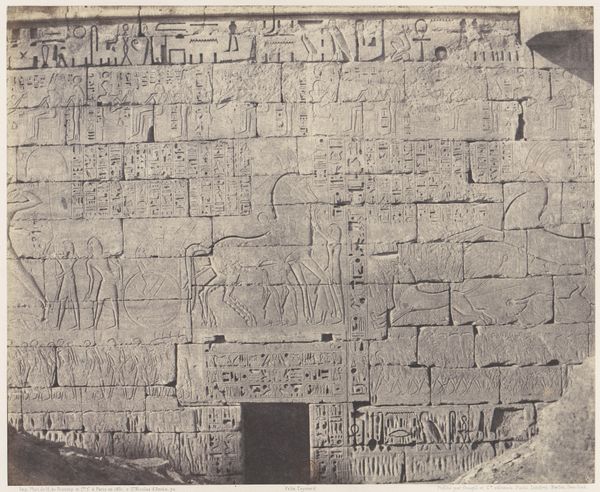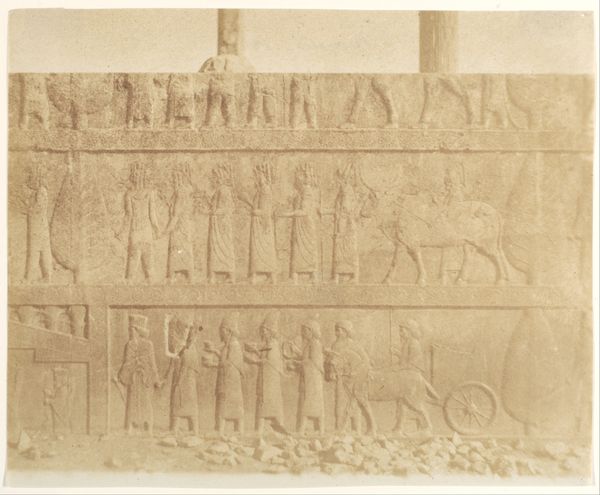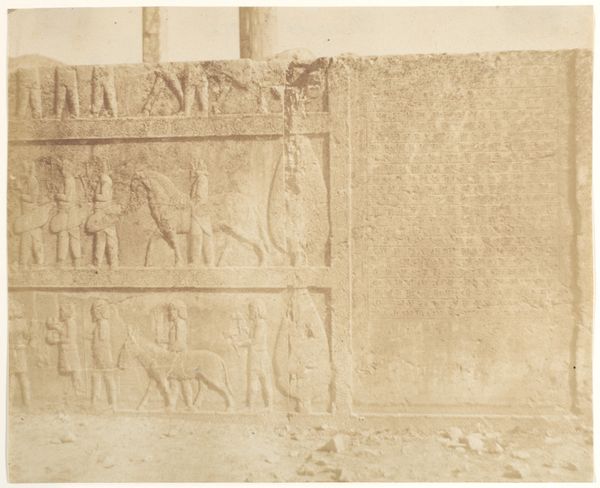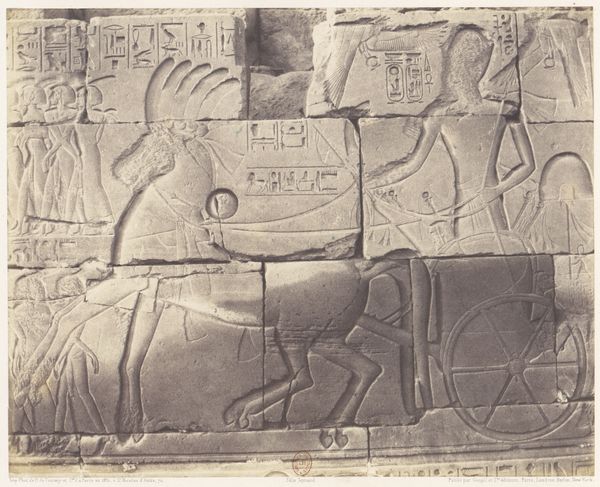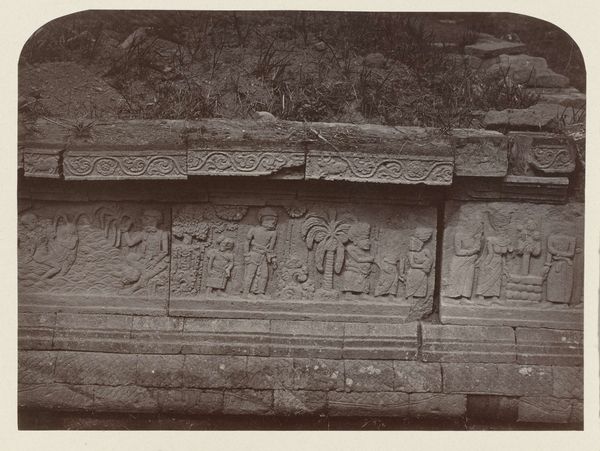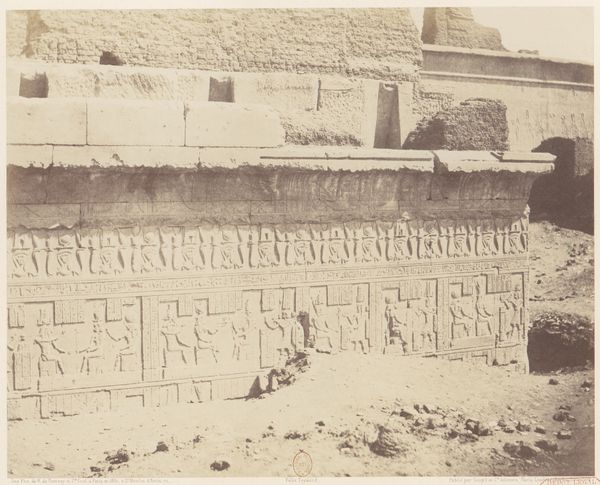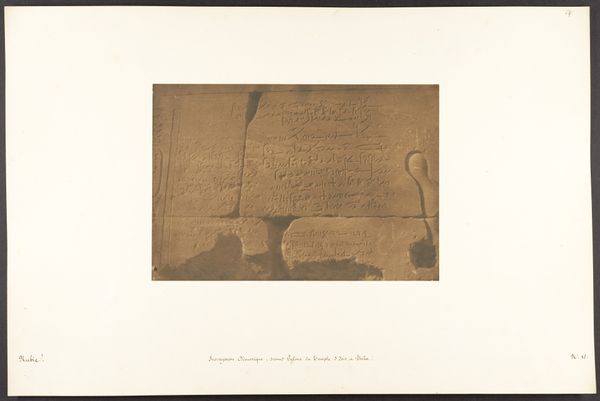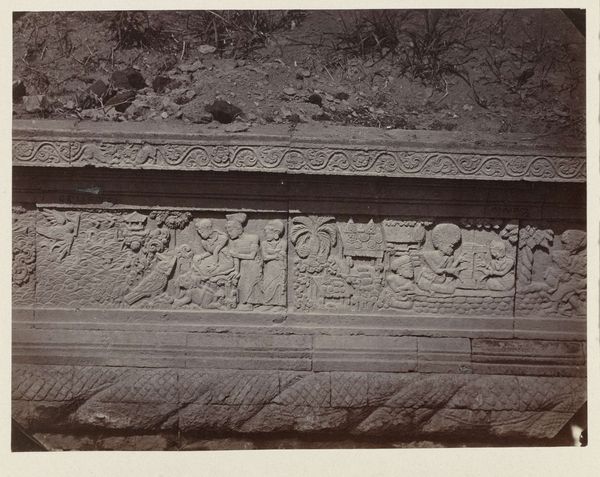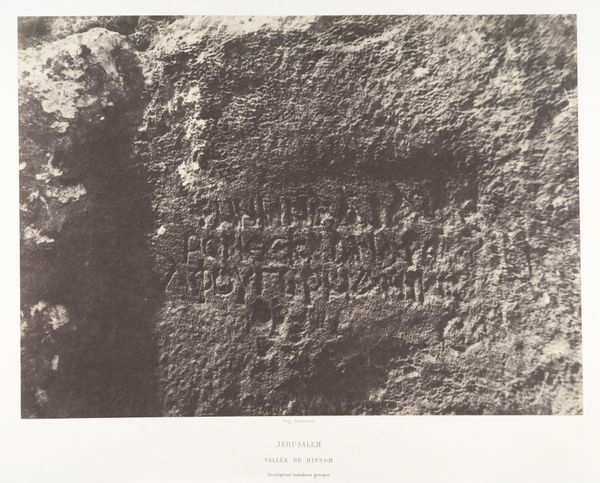
daguerreotype, photography, architecture
#
landscape
#
daguerreotype
#
ancient-egyptian-art
#
photography
#
ancient-mediterranean
#
architecture
#
monochrome
Dimensions: 16.0 x 22.4 cm. (6 5/16 x 8 13/16 in.)
Copyright: Public Domain
Curator: Let's focus on Maxime Du Camp's, “Nubie. Grand Temple d'Isis, A Philoe,” a daguerreotype taken in 1850. Editor: It strikes me as overwhelmingly solemn. The sheer density of the inscriptions is really intense. It feels like this weight of history pressing down. Curator: Precisely! These inscriptions at the grand Temple of Isis carry so much symbolic weight. In Egyptian culture, texts weren't merely informative; they were alive. Each hieroglyph possessed magical potency, intended to shape reality and honor the divine. Editor: Photography also, at the time, had this purported ability to objectively capture and preserve truth. Bringing the daguerreotype and ancient hieroglyphs together here speaks to a tension in colonial documentation. Do you think Du Camp's project attempts to immortalize or exploit this visual language? Curator: I think there's a delicate dance between honoring and appropriating. Certainly, images like these fed the Western imagination, contributing to a cultural fascination, or, as some would argue, fetishization, with Ancient Egypt. Yet the symbols continue to fascinate, no? They reveal persistent threads within our shared cultural narrative—our longing for meaning, order, and immortality. Editor: No doubt, seeing this photograph contextualized within the colonial era highlights its role as an artifact of cultural encounter, rather than a straightforward representation of an ancient site. It opens avenues to explore who controlled the narrative and what cultural dialogue or tension it exposed. Curator: Yes, by showing us, it helps us understand ourselves. Editor: That's a fitting perspective; to witness symbols speak to power and visual culture, then and now.
Comments
No comments
Be the first to comment and join the conversation on the ultimate creative platform.

